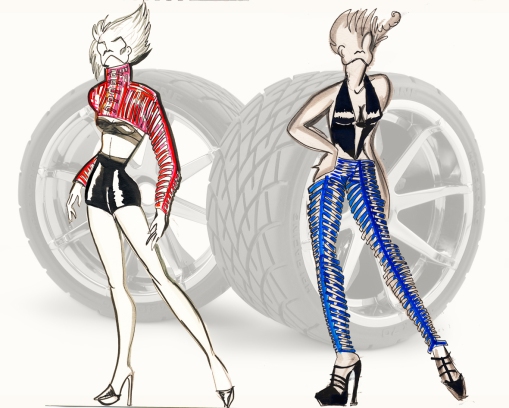United Colors of Benetton: Branding your Face.
We are bombarded by various types of advertizing every day, and have been participating in the domino effect of Viral Marketing by wearing logo-clad clothing and by participating in online social networks. Given how fiercely they compete for advertising space in which to expose us to their imagery, it’s not surprising that companies have come up with new, effective ways to promote they’re brands. The new trend in Viral Marketing seems to be the creation of online competitions in which participants upload pictures of themselves on a website or bog in the hopes of winning prizes or representing the brand. You can find a substantial amount of these types of competitions online. I’m a bit of a contest junkie and I often enter these in the hopes of getting free stuff (I LOVE free stuff). Brands that have been organizing such competitions are Got2be Hair products, where the most popular hairstyles would win free hair products, and FCUK where participants would upload pictures of themselves in the brand’s clothes in the hopes of winning a fashion spree (this competitions was unfortunately only open to UK residents).
In February, Benetton pushed the online picture-uploading contest concept even further by making it part of a full-scale advertisement campaign. “Its My Time Gobal Casting Competition” is promising the 100 most popular profiles a place in the next Benetton book and a 200$ shopping spree, and promising 20 winners a spot as the new faces of Benetton in the next fall/winter 2010 campaign.
“The Competition intends being a global representation of style, an interactive search for new faces, new looks, new ways of being that fully convey the values of the United Colors of Benetton brand.” writes the Promoter in the Terms and Conditions of the “It’s My Time” competition.
I applaud the “Promoter” who came up with this marketing ploy. Benetton is known for it’s controversial add campaigns photographed by Oliviero Toscani’s. These images had shock-value and were acute social commentary about racial issues, gay and lesbian rights and HIV awareness. In a world where the president of the United States is black, women have equal rights and Gay marriage is being legalized in many places of the world, these adds have sort of lost they’re relevance. This is not to say that the fight equal rights is over, far from it, but these adds do not have the same effect today as they did in the 80’s and 90’s.
With “It’s My Time”, Benetton has found a way to renew its relevance in popular culture by using the ever-growing online community as a means of viral marketing. However, I can’t help but find these new means of advertising slightly disturbing. The “It’s my Time” has reached 48000 entries (including my own), which means that right now thousands of individuals around the world are uploading images of themselves in the hopes of being the one that will “convey the values of the United Colors of Benetton Brand“. Which means we are fully prepared to be branded with the Benetton stamp and will participate in an advertizing campaign for free. Let’s not take into account the prizes we are competing for. Every time we post a link to our competition profile, we are actively participating an the advertisement campaign.
I’m not an advertisement or marketing expert, but I’m pretty sure that the cost of the prizes offered to the winner will come up to a lot less then setting up an international advertisement campaign. Let’s not forget that the “Promoter” plans on including the 100 most popular profiles in the next Benetton Book and that they will already have the rights to all the pictures uploaded by the participants. Maby someone more knowledgeable can enlighten me: I’m not an expert on copy right laws or ownership laws when it comes to publishing, but I suspect that including the following passage in the Terms and Conditions was kind of sneaky:
“All submitted material will be kept by the Promoter and will become the property of the same Promoter, who from that moment on will be free to use the aforesaid material regardless of whether or not the Entrant is selected as a Finalist or Winner. The Promoter may also use the submitted material, should the occasion arise, within the scope of advertising, commercial or communication activities connected with the Competition. With the acceptance of these terms and conditions, Entrants waive all intellectual property rights relating to the submitted material.”
Now I didn’t READ the Terms and Conditions before I created my profile and uploaded my pictures, and I’m pretty sure the greater part of the 48000 participants didn’t either. Which means that close to 50000 people gave away the rights to their image for a company to use whenever they want without really being aware of what it implied. It’s pretty amazing that by creating these contests, companies are inciting thousands of individuals to actively participate in the construction of the brand’s image and help it acquire new spaces for advertising possibilities (your blog, you’re facebook page, your myspace… your entire e-mail address book). I’m not against such marketing strategies, nonetheless I’m disturbed by how easily people can be coaxed into being used in an advertisement campaign for free.










